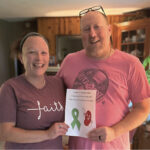We’ve heard so much lately about the problems with the Susquehanna River – water quality, sediment, pesticides, hormones and the smallmouth bass. Our river runs 464 miles from its source in Lake Otsego in New York to the Chesapeake Bay. It is the longest non-commercial river in the country, and the largest source of water for the largest estuary in the United States, providing more than half the freshwater that flows into the bay.
The Susquehanna flows through three states and drains more than 27,500 square miles in Pennsylvania, nearly half the state. Imagine the runoff!
The river is important recreationally here in the Susquehanna Valley, but it goes way beyond us. The condition of the river and what we put in it affects millions of folks all along its entire course. Every time you turn on your faucet, flush your toilet, wash your car or fertilize your lawn, it reaches the river. Every time we convert a field to a parking lot, we create more runoff.
The Chesapeake Bay Foundation, created in 1967 and headquartered in Annapolis, Md., is a non-profit organization dedicated to the restoration and protection of the Chesapeake Bay. In 1964, a group of Baltimore businessmen, all sailors, waterfowl hunters and fishermen, had lunch with Rogers C.B Morton, who was then a congressman from Maryland’s Eastern Shore. They wanted his help with problems they saw looming on the Chesapeake: more boats, more people, more houses, poor sewage treatment, dirty industrial discharges.
Morton responded by saying that they could not expect government to fix all the bay’s problems. “There is a great need,” he said, “for a private-sector organization that can represent the best interests of the Chesapeake Bay. It should build public concern and then encourage government and private citizens to deal with these problems together.”
The answer was not what the group had expected, but the words struck home to several of them. By 1967, the group, led by the late Arthur Sherwood, had formed and chartered the Chesapeake Bay Foundation to be that private sector voice working on behalf of the bay. They recruited a board of trustees that represented a variety of interests from throughout the Chesapeake watershed.
CBF’s beginnings were modest. Early in 1970, with membership at 2,000 and a staff of three, Arthur Sherwood took over as executive director and settled on two programs, Environmental Education and Resource Protection, with land conservation an integral part of the protection effort.
Every year, the foundation prepares its State of the Bay Report, measuring gains and losses in pollution, habitat and fisheries in the bay. The report for 2012 is encouraging. Gains have been made in five of the 13 indicators; seven remained the same and only one dropped.
The bay and its tributaries are still not out of danger. Pollutants levels are still way too high; toxins (including those from personal care products, pharmaceuticals, septic systems and agriculture) have not declined. The report said 72 percent of the bay and its tributaries are fully or partially impaired as a result of these toxins.
Surely, one of the major sources of pollution to the river and the bay is the use of lawn chemicals and pesticides. Spring has finally sprung, and we can’t wait to get outside and tend to the lawn and garden. We’ll do anything to bring the dead brown grass back to its lush summer green, including the use of fertilizers, herbicides and pesticides, all claimed to be “safe when used as directed.” We fertilize and treat our lawn, our neighbor does his, his neighbor, the whole neighborhood.
Our lawns are immaculate on the surface, but what is the cumulative effect on the environment? Questions have arisen regarding the safety hazards and environmental consequences of using so many chemicals in our landscapes.
Contrary to what lawn care companies advertise, herbicides and pesticides are not magic. While they may work on our lawns, by their very nature they can harm organisms other than the targeted species. This includes homeowners and their families, neighbors, pets and all other forms of life. Some of these chemicals remain active for years after application and accumulate over time in our bodies, and exceedingly high levels are washed into our storm water system, ending up in the river and, eventually, in the Chesapeake – producing algal blooms that negatively affect water clarity.
These pesticides and fertilizers are becoming some of the worst water pollutants in our watershed, indeed, in America. But people can protect our streams and rivers, as well as themselves and their families by knowing the facts. If having grass that looks more like Astroturf than living plants still seems important, it doesn’t have to come with pesticides, but rather products that are organic or natural. The list of alternatives continues to grow, and they are safer, cheaper and often work better.
Consider the state of the Susquehanna River and the Chesapeake Bay each time you take drink of water or take dip in your local swimming hole. Think about what you are adding to the environment when you flush outdated medicines down your toilet or remove some habitat. Together, you, me and the Chesapeake Bay Foundation can make a difference and bring the bay back to its former health.
Kermit G. Henning is host of abc27 Outdoors TV and a member of the Outdoor Writers Association of America.





